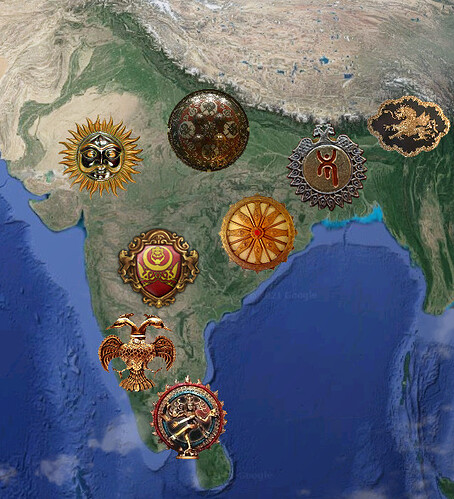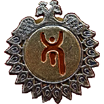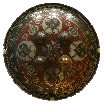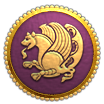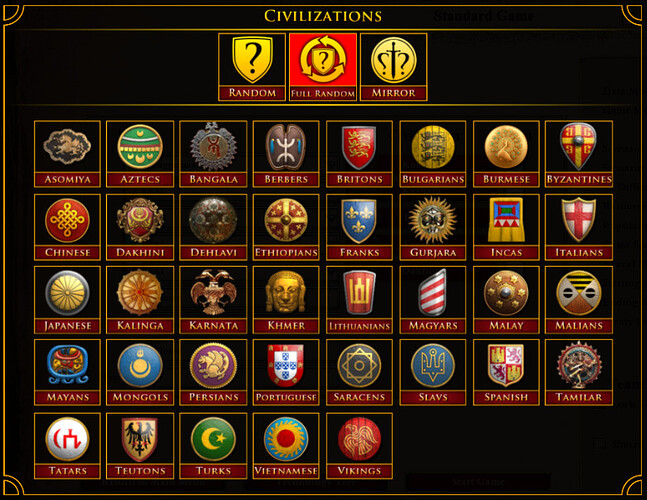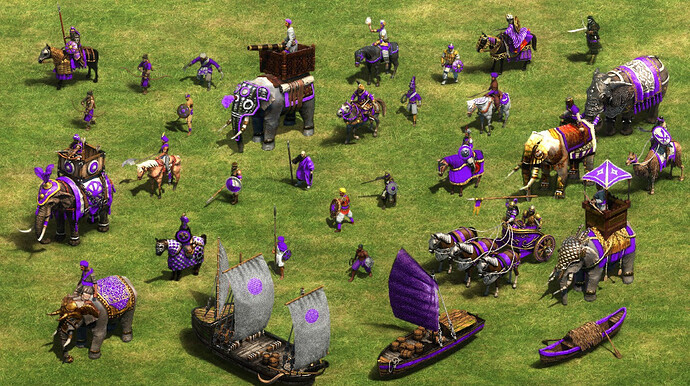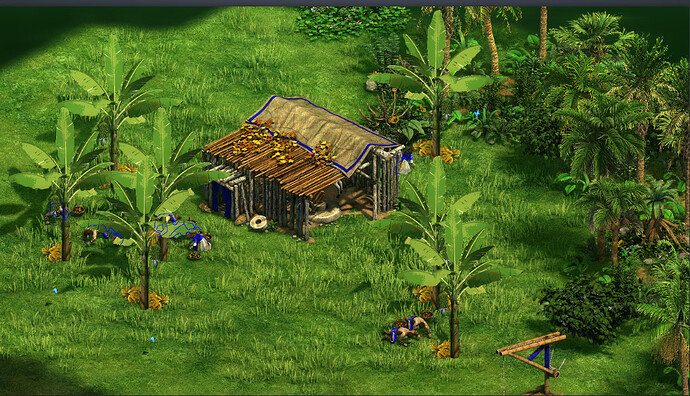So, we all know that only one civ in AOE 2 cannot represent all the medieval indian cultures, ethnicity, civs. Indian subcontinent is huge and diverse in culture. Maybe the devs have already realized it and working on an expansion. Yet we decided to make an expansion type mod on India as we could not wait. At first we were 2 but now there are many who are contributing to the project . Now i realized there are a whole bunch of people in AGE community who wants india to be split. For now the civs simply replace some of the ingame civs but we will try to expand the civ roster without removing anything if we get the opportunity.
Dharma Expansion civs :
1.Asomiya

civ overview:
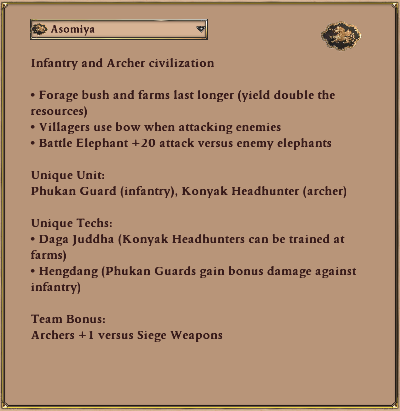
units :
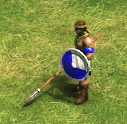
Phukan Guards

Konyak Headhunters
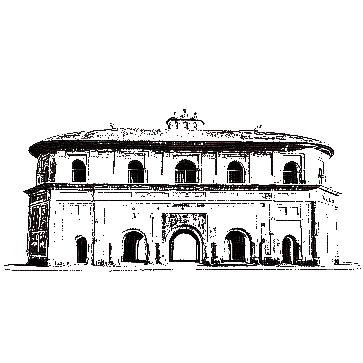
The Asomiya
Asomiya covers the Assam and Kachar region encompassing the Assamese people, Ahom people and Naga people. This place has a long independent history of being ruled by it’s local rulers only. Started as the Kamarupa Kingdom, then briefly vassalized by Pala, again gained independence and changed to Ahom Kingdom which lasted for a millenium years.
2.Bangala
civ overview:
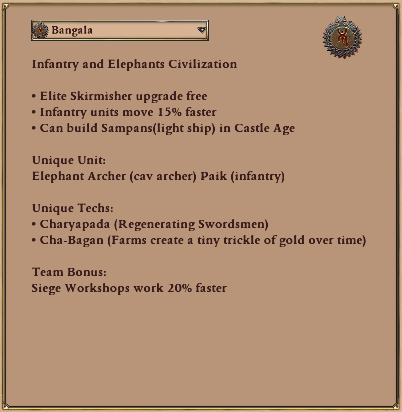
units:
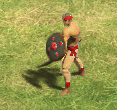
Paika
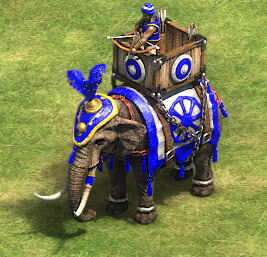
Elephant Archer

Sampan
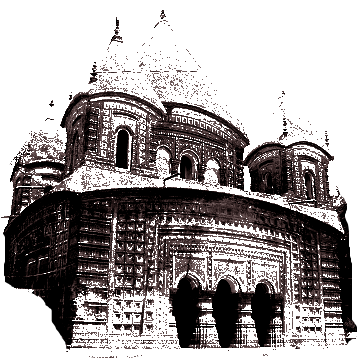
The Bangala
With its core in the Ganga-Brahmaputra delta, the immensely fertile region of Bengal has historically been one of the major power-centres in the Indian subcontinent. Polities and religious institutions within and around Bengal have greatly influenced the development of various cultures in the Indian subcontinent as well as in Southeast Asia.
A flat and densely-forested land, Bengal began to urbanise in the early centuries of the common era, though it had been home to minor polities such as its namesake, Vanga, from well before this time. By the 8th century, under the Pala dynasty, it was home to rich networks of agrarian production and religious activity. As the entrepot to the great networks of Northern India and with access to the emerging polities of the Tibetan plateau through the Himalayan passes, Pala Bengal rapidly grew to be one of the great geopolitical centres of gravity of the subcontinent, attracting traders and monks from across the East Coast and the Indian Ocean. It shaped the evolution of tantric religions, especially Buddhism: Vajrayana Buddhism, which is practiced in Tibet and much of Southeast Asia today, developed considerably in Bengal. So too did the Bangla language, arguably one of the most important literary traditions in Northern Inda.
The Pala Empire was one of the three great empires that partook in the struggle over Kannauj and the Gangetic plains during the between the 8th and 10th centuries, but the dynasty’s influence was on the decline by the 11th century, following the rise of the Chandras in the eastern part of Bengal. However, both suffered a serious defeat at the hands of the Cholas under the fearsome general Araiyan Rajarajan in 1014-15, clearing the way for the rise of the Senas and eventually the Devas. By this time, Bengal’s once-dominant position in Indian Ocean trade was being challenged by Tamilakam, and its once-energetic monasteries and universities were beginning to shrink. In the 12th-13th centuries, it would be integrated into the Delhi Sultanate.
3.Dakhini :
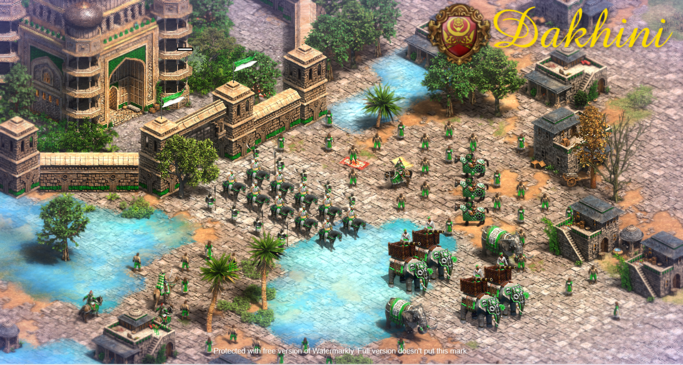
civ overview
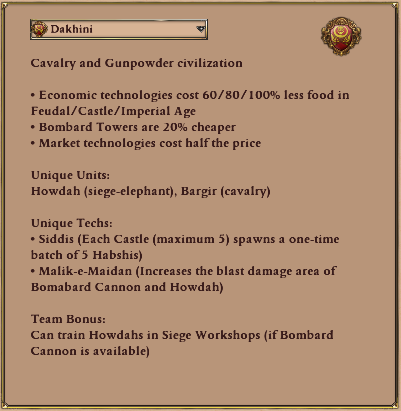
units
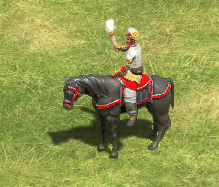
Bargir
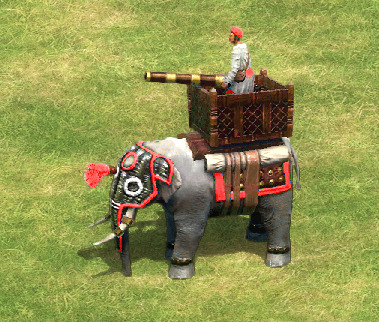
Howdah

Habshi
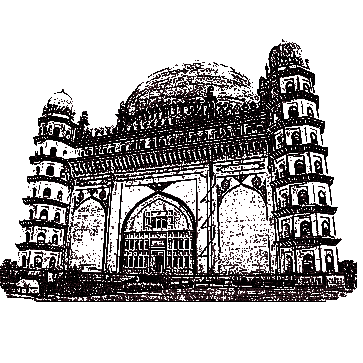
The Dakhini
Dakhini represents the regions of modern day Telingana, Northern Karnataka and Eastern Maharashtra. The rulers include Yadava Kings (Marathi), Kakatiya Kings (Telugu), Bahmani Kings (Perso-Turkic), Deccan Sultanate Kings (Perso-Turkic, Telugu, Kannadiga, Marathi). The Dakhini language of today evolved during this period.
Dehlavi :
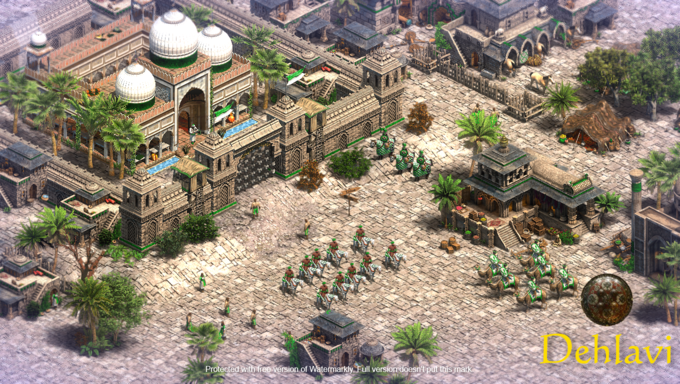
civ overview
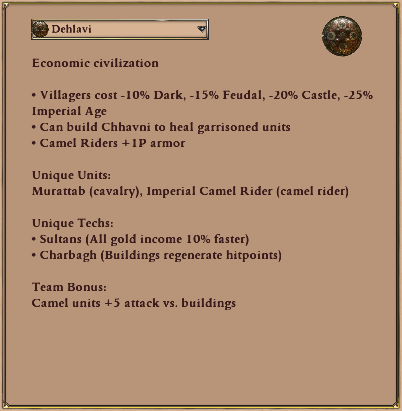
units
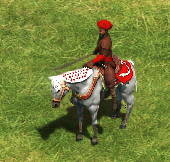
Murattab
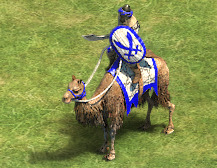
Imperial Camel Rider
Building
Chhavni
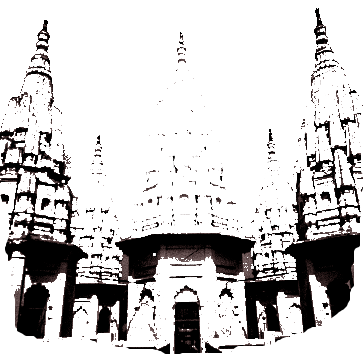
The Dehlavi
Straddling the great crossroads of Central Asia, West Asia, and South Asia, the northwestern portion of the Indian subcontinent is one of the hinges of global history. Drained by the many rivers that make up the mighty Indus, it has been home to people for millennia, and witnessed the coming and going of immense tides of people and cultures.
After the decline of the Indus civilisation in the late Bronze Age, the region became the nucleus of the earliest polities of the Indo-Aryans. However, the settlement of the vast, fertile Gangetic Plains shifted the centre of urbanisation and political power in the subcontinent East. After the emergence of the earliest North Indian empires, it was conquered and connected to the rapidly-growing networks of global trade that would be called the Silk Roads, becoming explosively prosperous. As the reach of the Gangetic empires waned over centuries, these same networks instead brought migrating nomadic peoples from Central Asia. A centuries-long wave of them - Scythians, Parthians, Kushans, even Huns - would conquer and settle in the region, making it one of the world’s most diverse, innovative, and multicultural regions. This is exemplified by the famous Gandhara Buddhas - Indian gods depicted in the garb of the Hellenistic Mediterranean world.
By the 7th century, however, the endless tides of moving Central Asians came to a brief close, and the balance of power began to veer towards the polities of the Gangetic Plains again. The Maukhari and then the Pushyabhuti dynasties, based in the upper reaches of the Ganga and Yamuna rivers, would establish the glittering city of Kannauj, controlling these valuable crossroads. The mightiest polities of medieval India would clash over who controlled Kannauj on and off through the medieval period. But as a new wave of Central Asian peoples began to once again move into Iran and Afghanistan as the Abbasid Caliphate declined in the 10th century, they converted to Islam, and retread the routes which other, older nomads had once taken into India. These Turkic and Aghan irruptions into South Asia would lead to the establishment of the Delhi Sultanate, once again plugging Northwestern India directly into a flourishing international system, this time Persianate rather than Hellenistic.
Though its initial establishment was violent and brutal, the Delhi Sultanate would prove to be one of the most innovative and influential polities that the subcontinent had yet seen, facilitating the interaction of the immense cultural formations that were the Persianate and Sanskritic world. Soon, however, these Turko-Indian Sultans were being praised in Sanskrit verses; the city of Delhi exploded in size and population as people displaced by Mongol conquests flocked to it. Indeed, though earlier Central Asian peoples who had settled in India - such as the Scythians - were eventually engulfed by other nomadic confederacies, the Turkic rulers of Delhi instead managed to successfully fend off the Mongols. The Sultan Alauddin Khilji would reorganise the state, military, and economy, ordering plundering expeditions into South India. This reversed, in a sense, the Rashtrakuta and Chola campaigns that had once terrified North India, and established a new status quo in the subcontinent with Delhi as the dominant power. This attempt at hegemony would ultimately fail as innovative new polities emerged in the Deccan, such as Vijayanagara and the Bahmanis. Delhi would gradually fade into irrelevance and then catastrophe after being savagely sacked by the Turko-Mongol warlord Timur in 1398. 128 years later, his descendant Babur put an end to the moribund Sultanate at the Battle of Panipat. His dynasty, the Mughals, would bring Delhi’s splendour to an apogee, ruling over an enormous, diverse, populous polity stretching over much of the Indian subcontinent and stirring the imaginations of traders, diplomats, rulers, and artists across the world. The Mughal court, and its allies and vassal courts, such as those of the Rajputs, would oversee a massive expansion in India’s international trade, and patronise the languages and art styles that we still see today. Under the Mughals, Delhi would become the imperial capital par excellence, far outshining Kannauj, but also attracting the avarice of conquerors from Persia, Afghanistan, the Deccan, and, fatally, the British. Delhi would serve as the capital of the British Raj, overseeing some of the colonial period’s most tragic humanitarian disasters and a profound remaking of the subcontinent. The imposing structures of the Raj loom over the capital of New Delhi today, casting a long shadow over India’s politics and peoples.
5.Gujara

civ overview
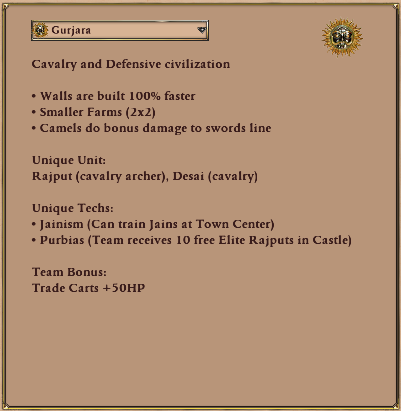
units

Rajput
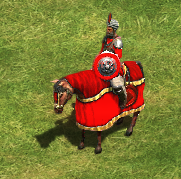
Desai

Jain
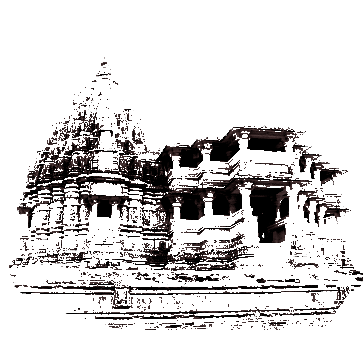
The Gurjara
The history of the Gurjara begins in the early Middle Ages after the White Hunnic raids into the Gupta Empire, when the first records of Gurjara-desha controlled by the Pratiharas emerge. The Gurjara-Pratiharas ruled from 550 to 1036. It is postulated that they may be of Central Asian descent, but it is still a matter of debate. It is also said that the Rajput clans that dominated Northern India are descended from this dynasty as well.
The exact centre of power of the Gurjaras are unclear but the Gurjara-desha country extends from Gujarat in Western India through Rajasthan and into the Gangetic plains in Northern India.
6.Kalinga

civ overviews

units

Khandayat
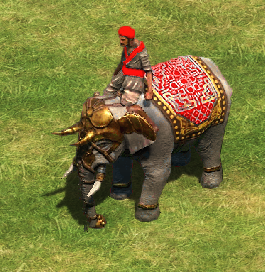
Flail Elephant
building
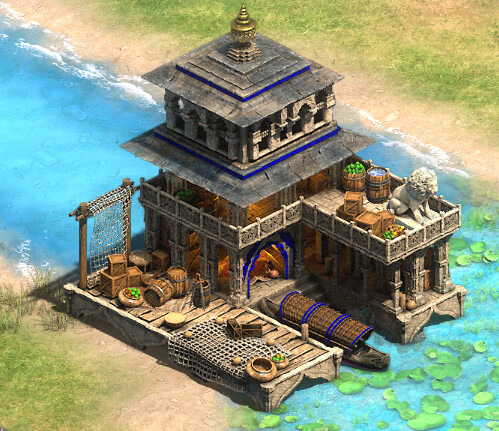
Harbor
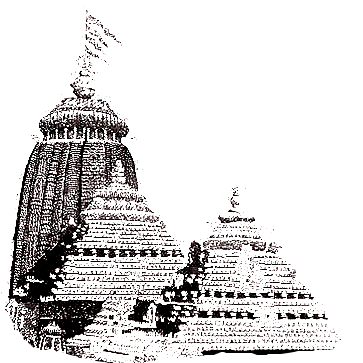
The Kalinga
Kalinga is a historical region of India. It is generally defined as the eastern coastal region between the Mahanadi and the Godavari rivers. They are first mentioned as a major tribe in the epic of Mahabharata. Owing to its geography, Kalinga has traditionally asserted its independence. It was ruled by various dynasties who bore the title Kalingadhipati.
During the expansionist period of the Magadhan Empire of the Mauryas, Emperor Ashoka led various campaigns throughout the Indian subcontinent to conquer them all. Kalinga was among the last regions for them to annex, which they did after a bloody war against the mighty and warlike group. This war is said to have a personal impact on Emperor Ashoka which led him to take up and propagate Buddhism throughout his realm with the message of peace. Kalinga was always one of the main centres of Buddhism and even housed a University (vihara) named Pushpagiri. Buddhism has coexisted with Hinduism and Jainism in Kalinga until the period of decline. It is also home to some magnificent Buddhist sites such as Ratnagiri and Lalitgiri. After the conquest by the Mauryas, Kharavela of Mameghavahana, who is believed to be a devout follower of Jainism is said to be one of the greatest kings of the region. Kalinga eventually would fall to Gupta rule as well but soon re-assert its independence. Kalinga mostly kept their independence throughout medieval period until the arrival of the Mughals.
The Kalingas are said to be the progenitors of various dynasties and lineages within mainland India, Sri Lanka, as well as the Nusantara. The legend of Prince Vijaya being banished from Kalinga and starting off his Dynasty of Anuradhapura in Sri Lanka is well known in Sinhalese traditions. Kalinga Magha also known as Kulankayan Cinkai Ariyan is said to be the founder of the Aryacakravarti Dynasty of the Jaffna Kingdom. Despite being a Tamil Kingdom, there are various theories of their origin being non-native and thus the insignia and name mostly points towards Kalinga. Shailendra Dynasty was the name of a notable Indianised dynasty that emerged in 8th-century Java, whose reign signified a cultural renaissance in the region. According to one of the theories, their origins are said to be from the Kalinga region.
In the Middle Ages, Kalinga saw the rise of great dynasties like the Eastern Gangas, Somavanshis, and the Gajapatis. The Eastern Gangas are renown for staving off Dehlavi invasions. The Gajapati dynasty was established by Emperor Kapilendra Deva which at its greatest extent stretched from Kaveri River in the Tamil country to Hoogly in Bengal. The Gajapatis also competed for power with the mighty Vijayanagara Empire of South India as well as the Deccan Sultanates. The Middle Ages also saw the rise of beautiful architecture in the region. The Konark Sun Temple is a fine example of their magnificence. Attributed to king Narasimhadeva I of the Eastern Ganga Dynasty, the temple is dedicated to the Hindu Sun God Surya.
The region eventually fell to the Mughals and later the British as part of the Northern Circars and the Tributary Odiya Princely States until the formation and accession into the Republic of India and it survives as a political entity in the Modern Age as the State of Odisha.
7.Karnata
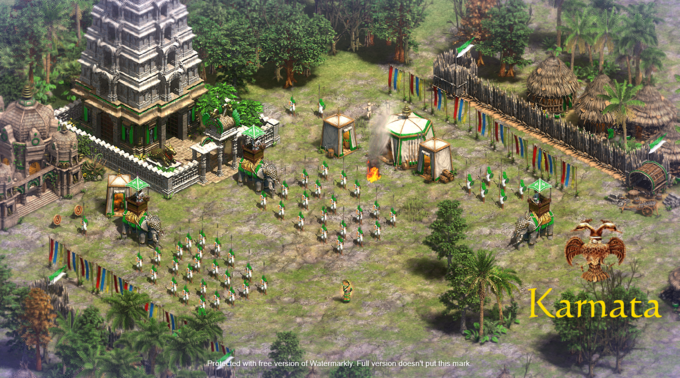
civ overview
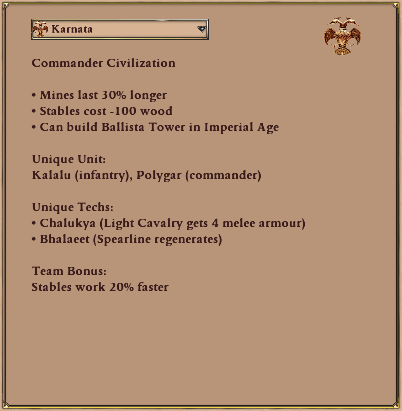
units
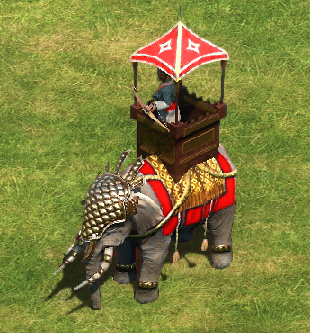
Polygar
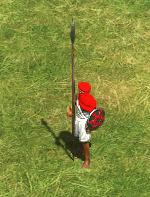
Kalalu
Building
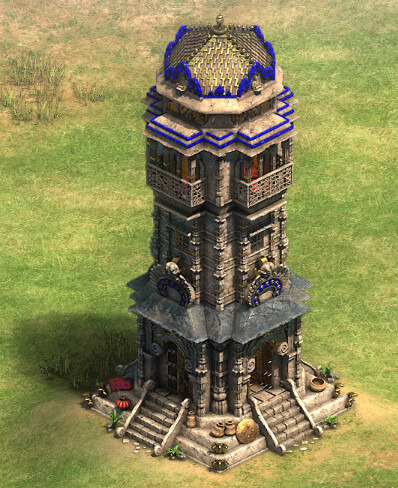
Ballista tower
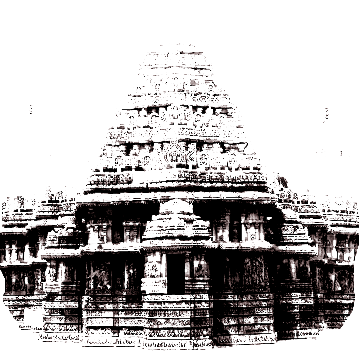
The Karnata
The region of Karnataka dominates the southern half of India’s Deccan plateau and is home to many ethnic and linguistic groups. Among these, Kannada speakers have dominated not just Karnataka but much of the Deccan for centuries, emerging onto the political scene with the Kadambas of Banavasi, near the Western Ghats, in late antiquity. Soon after, the Chalukyas of Badami arose to control much of Northern Karnataka and led campaigns to subdue parts of Maharasthra and Southern Karnataka. They were overthrown by their vassals, the Rashtrakutas, who controlled the Godavari and Bhima river valleys, eventually dominating much of the southern part of the Indian subcontinent. From the 8th to the 10th centuries, the Rashtrakutas involved themselves in international trade, encouraged the flourishing of Kannada courtly literature, interfered in the politics of Southern and Central India, and even invaded the Gangetic Plains on at least three separate occasions.
These northern campaigns often centered around the glittering metropolis of Kannauj. The Gurajara-Pratihara Empire (550-1036) pushed from Gurjara-desha, the Pala Empire (750-1174) from Bengal, and the Rashtrakuta Empire from the Deccan.
The Rashtrakutas eventually disintegrated in the 10th century after their capital was sacked by a Central Indian vassal. They were soon succeeded by the Chalukyas of Kalyana. These new Chalukyas clashed with the Cholas for domination of South India in a series of devastating wars, overseeing a period of state expansion, growth of commerce, and artistic innovation. New centres of power grew in Telangana, Southern Karnataka, and Maharasthra, leading to political and religious ferment as the Chalukyas began to wane. Until this period, Karnataka’s religious scene had been influenced by Puranic and Tantric Hinduism as well as Jainism. It was during this high medieval period that a new native religion emerged: Virashaivism, a broad-based social movement patronised by Basavanna, a key statesman. It was a Shiva-focused bhakti movement which sought to overturn the caste system which had been integral to the power structures of Karnataka’s empires. Virashaivism and its close relative, Lingayatism, continues to exist in a different form as one of the key religions of the region.
From the 13th century onwards, the erstwhile vassal dynasties of the Chalukyas engaged in a complex diplomatic, political and military dance. The Seuna Yadavas, one of these dynasties, collaborated with the armies of the Khiljis of Delhi to overpower the other two: the Kakatiyas and Hoysalas. However, by the 14th century, Delhi’s subcontinental empire began to collapse, leading to the rise of the Bahmani Sultanate in northern Karnataka and the Vijayanagara Empire of Southern Karnataka. The Bahmanis and their successors expanded over much of the Deccan while Vijayanagara expanded into the Tamil country, fighting savage wars with each other and with other powers such as the Odias. Both the Deccan Sultanates and Vijayanagara patronised a wide variety of languages, including Sanskrit, Telugu, Kannada, Marathi, and Telugu, and competed with each other using gunpowder and cavalry imported through their connections with the flourishing globalised trade of the Indian Ocean. The city of Vijayanagara, modern Hampi, was one of the largest cities in the world at its peak, and its architectural magnificence, incorporating influences from across South India and the Persianate world, can still be seen today. However, after many years of playing the Deccan Sultanates against each other, Vijayanagara was forced to face them all at the Battle of Talikota in 1565. The Sultanates’ superior gunpowder technology won the day, and the city was sacked, though many of its important buildings survive today.
Over the next century, Vijayanagara’s feudatories rose up throughout South India, of which the Mysore Kingdom is the most renowned. Their de facto leader and rocket missile expert, Tipu Sultan, conducted an expansionary campaign, challenging the Marathas, British Madras, and other powers, but was eventually defeated. The Mysore State existed semi-independently until its accession into the newly formed Indian Union and was into the modern Karnataka State.
8.Persians :
civ overview :
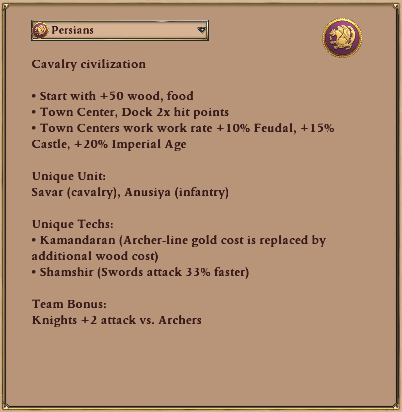
units

Savar
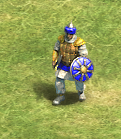
Anusiya
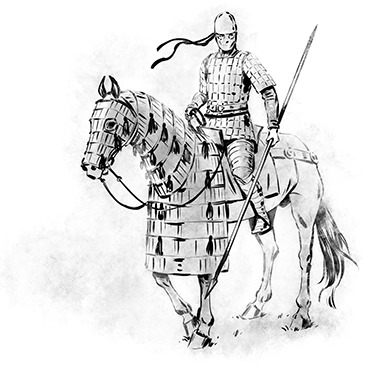
The Persians
The Persian Empire had existed for many centuries when the Middle Ages began. It had been reassembled following the conquest by Alexander in the fourth century BC and the subsequent breakup of his empire in later centuries. The Persians had been fighting the Romans since the third century AD.
The Persian Empire stretched from Mesopotamia to India and from the Caspian Sea to the Persian Gulf, encompassing the modern nations of Iraq, Iran, and Afghanistan. They fought the Romans, and later the Byzantines, for control of modern Syria, Turkey, Palestine, Israel, Egypt, and Arabia. The capital of the Persian Empire was Ctesiphon, called Baghdad today.
During the third and fourth centuries, the Romans made several attempts to subdue the Persians. In 364 a peace treaty was signed between the two that allowed the Persians to consolidate their power to the east and north. Beginning with the sixth century, the Persians began attacking the Byzantine Empire in Syria, Palestine, Egypt, and modern Turkey. The war between the two powers went back and forth. In 626 the Persians besieged Byzantium itself without success, and the Byzantines were able to invade Persia the following year. Peace was made between the two exhausted empires in 628.
The Persians were unprepared for the fury of the Islamic Arabs in the seventh century. The Sassanid dynasty of Persia ended in battle in 636. The Persians did not have a capital with defenses comparable to those of Constantinople. Muslim conquest of Persia was complete by 651.
9.Tamilar

civ overview

units

Padai
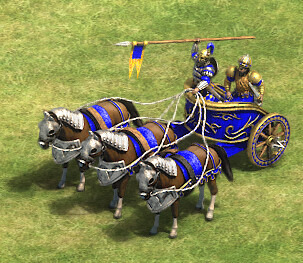
Ratha
Building
Storage

The Tamilar
The Tamil country, or Tamilakam, encompasses a sizeable chunk of the southern tip of the Indian subcontinent, including northern portions of Sri Lanka. The existence of Tamil-speaking polities is well attested to at least 300 BCE, as exemplified in epics and great texts that belong to the Sangam period. Recent findings in Keezhadi (Vaigai) and Pattanam indicate that urbanism in Tamilakam might even be centuries older than that, with some evidence of interaction with the Indus Valley Civilisation.
In the Sangam period, roughly the centuries immediately before and after the Common Era, the Tamil country was dominated by the polities of the Three Crowned kings: the Chola at Uraiyur, the Pandya at Madurai, and the Chera at Karur, with the insignia of the Tiger, Fish, and Bow & Arrow respectively. However, they were only the most prominent of a network of warlike chiefs, including the Ays and Ezhimalas, among others. In the earliest times, these polities ruled over kinship-based redistributive economies with a significant interest in international trade. They ruled over diverse and prosperous coastal cities, within which the presence of Buddhism, Jainism, Hinduism, and the already existing Tamil pantheon are attested. In roughly the 4th century CE, the Tamil country entered a “dark age” from which little material survives, under the rule of the enigmatic Kalabhras; by the 6th-7th centuries, the older kingdoms began to resurface, along with a new one: the Sanskrit-speaking Pallavas. The Pallavas patronised the emerging Puranic, temple-based Shaiva bhakti movement, encouraged the immigration of Brahmins, and expanded agriculture in Northern Tamil Nadu, clashing with the empires of the Deccan on multiple occasions. They would eventually be overthrown by vassals who claimed to be descended from the Cholas of the Sangam period, though a direct linkage is difficult to establish with certainty.
From the 10th through the 13th centuries, these Cholas would raise the Tamil country to a splendid apogee. Successfully navigating the complex political, social and economic systems of the Tamil country, Rajaraja I and Rajendra I would lead a series of successful military expeditions into Kerala, the Deccan, Sri Lanka, Andhra, Odisha, and even Indonesia. They encouraged a flourishing trade with Fatimid Egypt and Song Dynasty China, drastically increased the global reach of Tamil merchant guilds, and encouraged a wave of urbanisation along India’s east coast through the building of temples and commercial centres. They were also renowned as patrons of the arts: Chola bronzes are renowned to this day, and some of their temples, such as the Brihadishvara and Gangaikondacholeshvara, were among the most imposing monuments of their day. However, Chola expansion and wars were not indefinitely sustainable, and imperial authority gradually began to weaken as temple-based and commercial power centres rose in importance. The Pandyas then briefly rose to prominence again, continuing to encourage international trade, especially with the Mongol world, as attested by Marco Polo. Their urban and religious centres were, however, devastated by a 14th century raid from Delhi, leaving the Tamil country to be overpowered by the Karnatic giant that was the Vijayanagara empire. The Tamils would rebel against Vijayanagara authority on multiple occasions, but this coastal land’s commercial importance was such that Vijayanagari dynasties would even halt civil wars to subjugate them time and again.
After the collapse of Vijayanagara’s power in the aftermath of the Battle of Talikota, many warlords who had once served it began to carve out their own principalities. These were the Nayaka lords, and they would encourage Tamil and Telugu literature, especially in the glittering salons of Thanjavur. This would continue even after they were replaced by the invading Marathas. The Poligars, local warrior-chiefs loyal to the Nayakas, continued to exist, and are renowned for their staunch resistance to the Arcot State and the British Madras. Under colonial rule, Tamils would be forced into forced labour in plantations in the West Indies and Southeast Asia.
Today, the legacy of these seafaring, conquering and conquered people remains in the fact that the Tamil language is official in several countries such as the Republic of India (Tamil Nadu State), Sri Lanka, and Singapore. Many countries also host a Tamil diaspora, and they are especially notable in Malaysia.
These are all the civs that have been added to the mod. To learn more about the civs like what voice sets used, theme song, wonder etc and to help making the mod or just to discuss join discord server :
We plan to add more civs like Tibet, Afghans, Punjabs etc. But this is not it, for scenario design @Juggernaut8704 also added some scenario editor stuff
Scenario Editor Units :
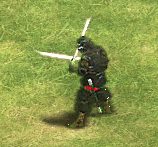
Immortal

Aswarohi
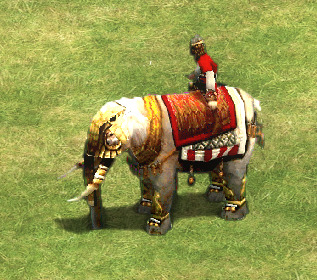
Mahout
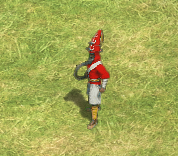
Chakram
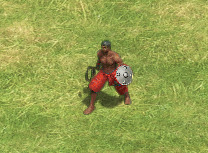
Urumi
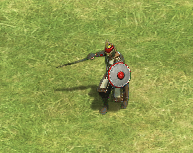
Patta
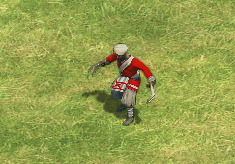
Bagh Nakh
The scenario editor units may be given to a civ if it seems fit
Also for Competitive players :
You can join the event Dharma Cup … For more info join Dharma cup discord server :
I will update this thread when the mod is updated and if something about the civs is changed  ︎
︎
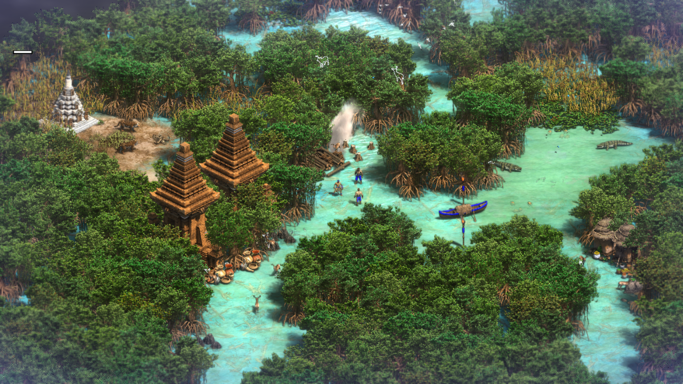

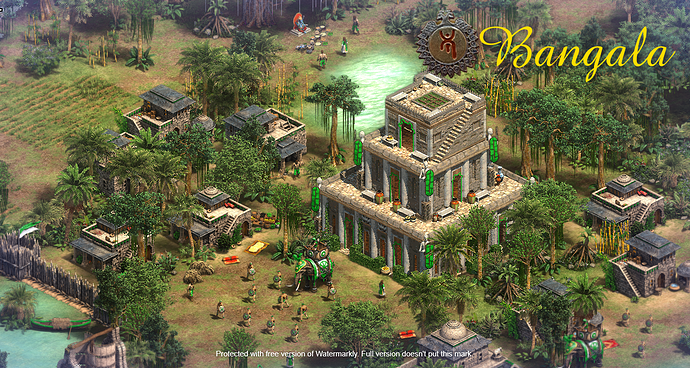
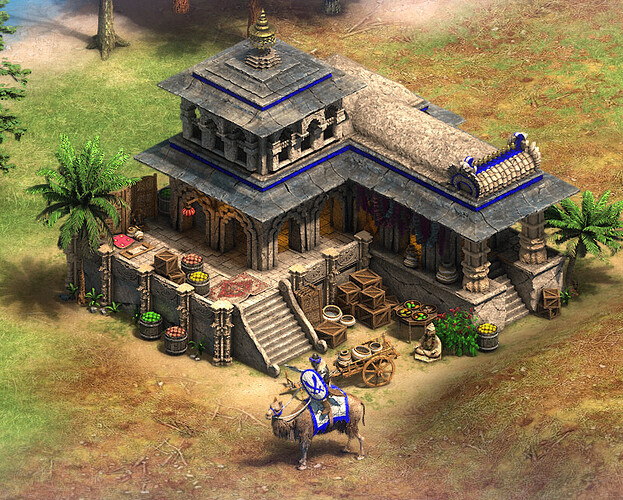
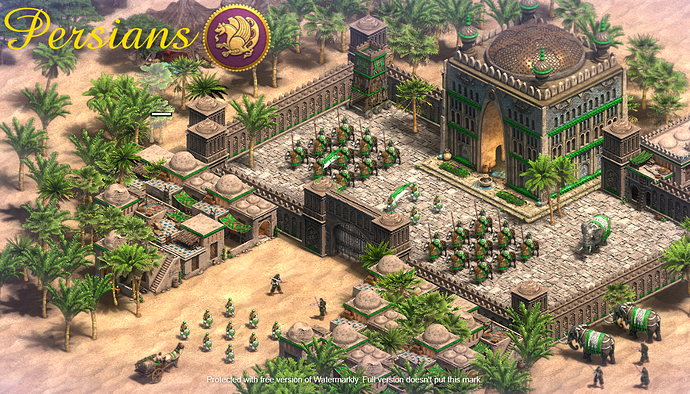



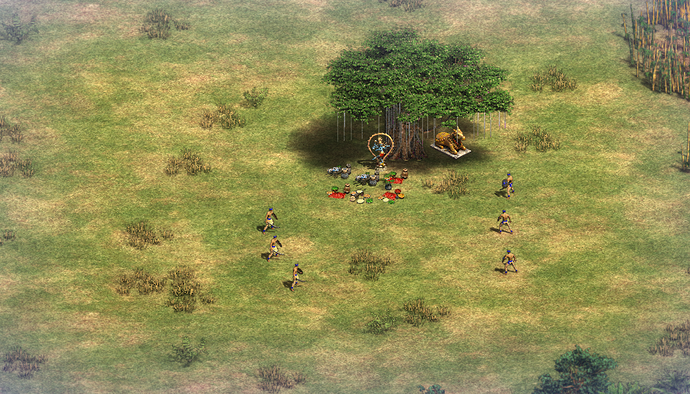
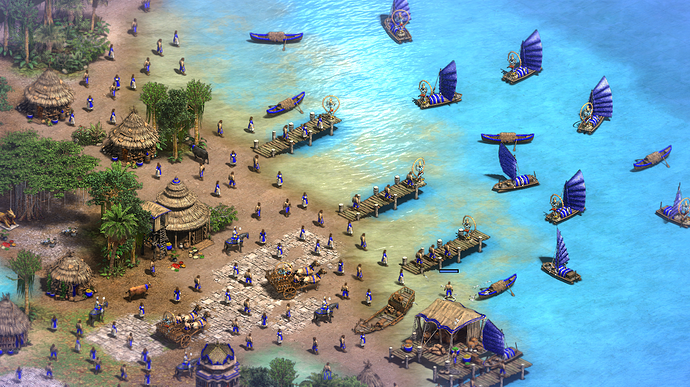
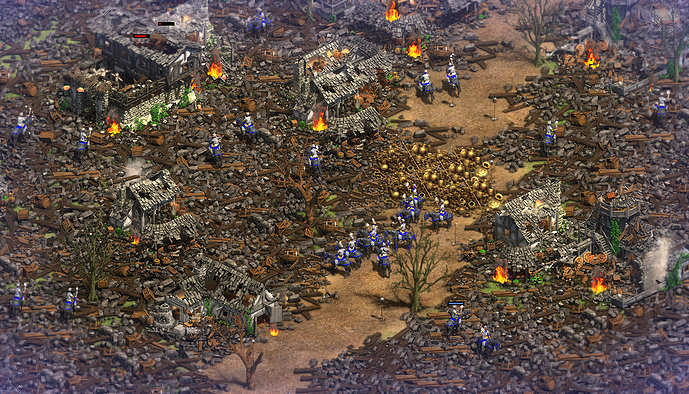
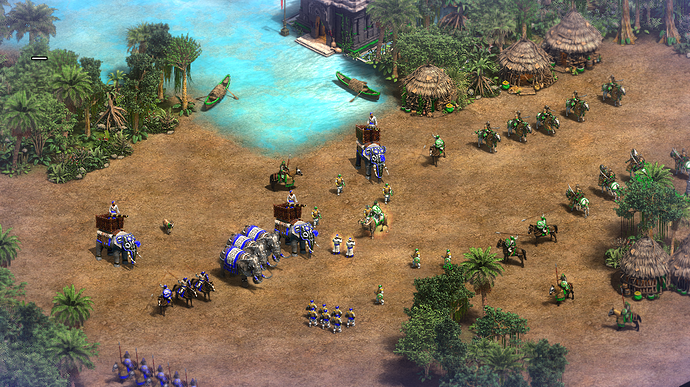
 It looks like you guys have a lot of talent.
It looks like you guys have a lot of talent.